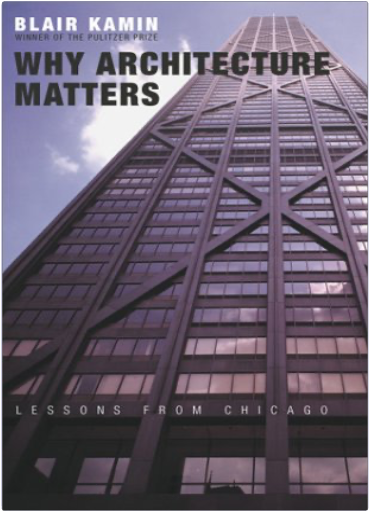 Why Architecture Matters: Lessons from ChicagoBlair Kamin Why Architecture Matters: Lessons from ChicagoBlair Kamin For more than a decade, Pulitzer Prize-winning Chicago Tribune architecture critic Blair Kamin has been writing fiery, intelligent essays on the state of contemporary architecture. His subjects range from high-rises to highways, parks to public housing, Frank Lloyd Wright to Frank Gehry. Why Architecture Matters collects the best of Kamin's acclaimed columns, offering both a look at America's foremost architectural city and a taste of Kamin's penetrating, witty style of critique. 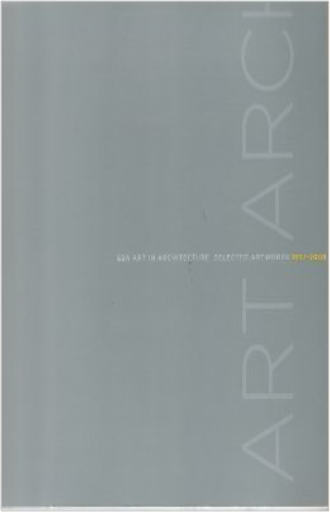 GSA Art in Architecture: Selected Works 1997-2008 GSA Art in Architecture: Selected Works 1997-2008 Since the inception of GSA's art program more than three hundred and fifty works of art have been installed. This book showcases twenty-seven of these commissions. All from the past decade, these works provide a window into the important cultural and civic discourses between the American people and their government. These artworks also affirm, through their creative and aesthetic expressions, that our democratic society is something to cherish and celebrate. Selected from across the nation, these commissions highlight the talents and diversity of America's artists and the wide spectrum of aesthetic, conceptual, and theoretical inquiry they are exploring. 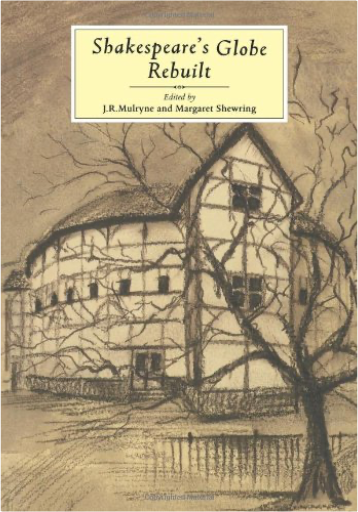 Shakespeare's Globe RebuiltJ. R. Mulryne, Margaret Shewring Shakespeare's Globe RebuiltJ. R. Mulryne, Margaret Shewring The rebuilding of the Globe theater (1599-1613) on London's Bankside, a few yards from the site of the playhouse in which many of Shakespeare's plays were first performed, must rank as one of the most imaginative enterprises of recent decades. The realization of the vision of Sam Wanamaker and his architect Theo Crosby, it has aroused intense interest among scholars and the general public worldwide. In anticipation of the official opening and the first performance season, visitors have been drawn in large numbers to the auditorium and exhibition. Shakespeare's Globe Rebuilt offers a fully-illustrated account of the research that has gone into the Globe reconstruction, drawing on the work of leading scholars, theater people and craftsmen to provide an authoritative view of the twenty years of research and the hundreds of practical decisions entailed. Documents of the period, both visual and written, have been explored anew; the techniques of timber-framed building have been relearned; the archaeology of the Globe and the neighboring Rose playhouse has been further evaluated; the decorative practices of Elizabethan craftsmen have been researched; and all this reconciled with the requirements of the actors and the practical and legal restrictions of modern architectural design. The result is a book that will fascinate scholarly readers and laymen alike. 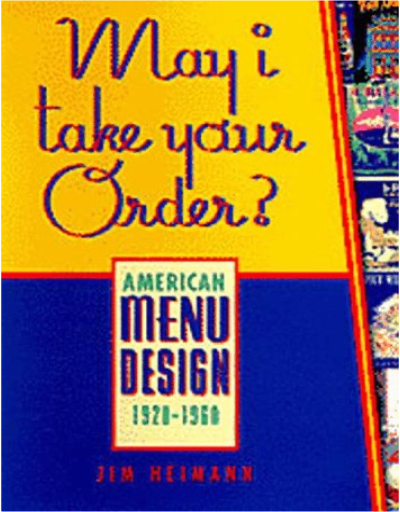 May I Take Your Order: American Menu Design 1920-1960Jim Heimann May I Take Your Order: American Menu Design 1920-1960Jim Heimann Our special today is a tasty treat called May I Take Your Order? Brimming with classic restaurant menus from the roaring '20s through the fabulous '50s, May I Take Your Order? is the first book to feature this hot new collectible and design resource with hundreds of color reproductions. Author Jim Heimann showcases 250 original menus from all kinds of restaurants, including roadside diners à la Route 66, theme restaurants (travel, Western-style, celebrity eateries), five-star restaurants, nightclubs, bars, and cafés. With menus and vintage photographs from some of the greatest dining establishments of the era, this survey of a popular artform offers an uncommon perspective on design in the early half of the century — as well as a glimpse of prices and culinary preferences of yesteryear. From the elegance of Art Nouveau to playful Art Deco designs to the ultra-modernism of the late Ô50s, this is an exciting new y'nd for artists, designers, and restaurateurs looking for ideas and inspiration. 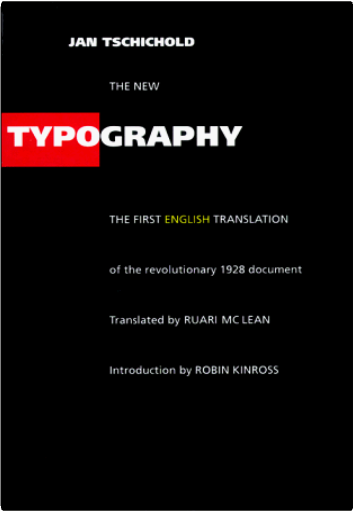 The New Typography: A Handbook for Modern DesignersJan Tschichold The New Typography: A Handbook for Modern DesignersJan Tschichold Since its initial publication in Berlin in 1928, Jan Tschichold's The New Typography has been recognized as the definitive treatise on book and graphic design in the machine age. At once a key theoretical document of Central European modernism between the world wars and an invaluable source of working principles for the practicing designer, this classic work enjoys the reputation among book artists that Le Corbusier's Toward a New Architecture has long held among architects. 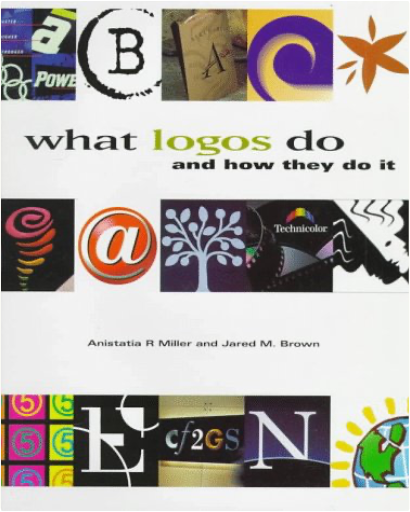 What Logos Do and How They Do ItAnistatia R. Miller, Jared M. Brown What Logos Do and How They Do ItAnistatia R. Miller, Jared M. Brown Logos are one of the most succinct forms of advertising and one of the greatest challenges of graphic design: besides being immediately recognizable, logos must convey a big message in a small space. The best logos are striking, symbolic brands that cut through language by employing shape and color as their main communication tools. What Logos Do and How They Do It presents twelve case studies and hundreds of examples of current logos that have met with great success. An essential for both novice and professional designers, this book illuminates the logo design process and explains what makes each logo work for its market. 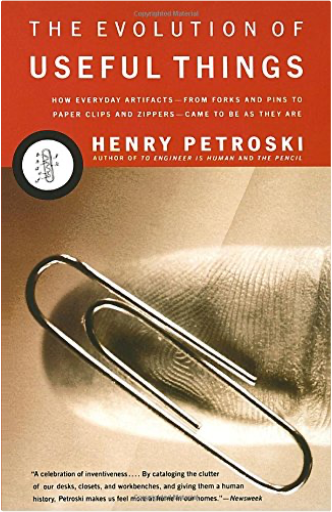 The Evolution of Useful Things: How Everyday Artifacts-From Forks and Pins to Paper Clips and Zippers-Came to be as They areHenry Petroski The Evolution of Useful Things: How Everyday Artifacts-From Forks and Pins to Paper Clips and Zippers-Came to be as They areHenry Petroski How did the table fork acquire a fourth tine? What advantage does the Phillips-head screw have over its single-grooved predecessor? Why does the paper clip look the way it does? What makes Scotch tape Scotch? 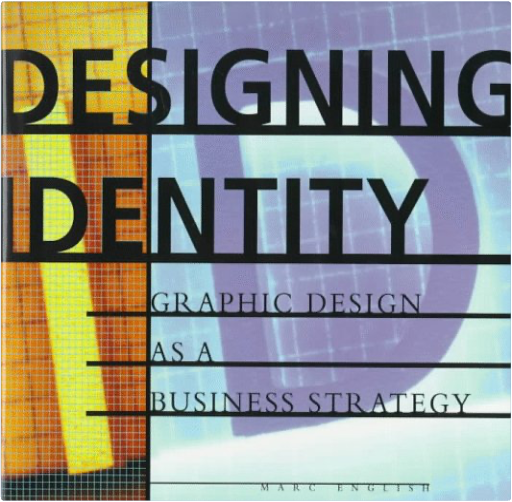 Designing Identity: Graphic Design As a Business StrategyMarc English Designing Identity: Graphic Design As a Business StrategyMarc English Profiled here are nine case studies, each providing insight into a specific business arena, and the unique role design plays in developing an identity as part of a strategy for success. Some of the best designers in the field today will explain their process in creating identities, from initial client meetings and planning, through logo development and a wide variety of identity applications. Additionally, a showcase of identity projects, from local ventures to national enterprises, further details the objectives of client and designer. 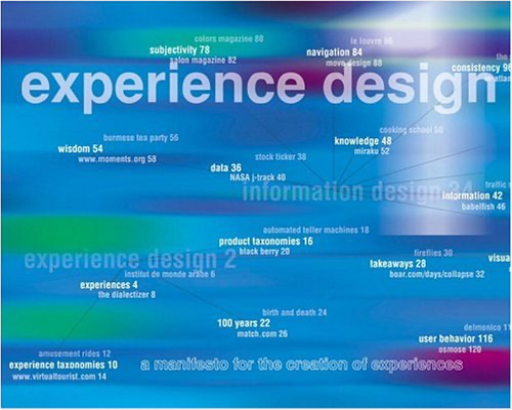 Experience DesignNathan Shedroff Experience DesignNathan Shedroff With Experience Design, Nathan Shedroff has designed and written a book for those in the digital and related design professions, especially those creating online and interactive media who are looking for core inspiration and meaning in their work. This is a book directly at the intersection of today's design disciplines - interaction design, information design, visual design, and more. Shedroff provides not only a way of designing online experience, but also, and more importantly, an approach to all design, whether it be of products, services, environments, or events. Read cover-to-cover, Experience Design is a kind of textbook that presents theories and examples. Opened to any page at random, it is a source of inspiration that challenges your thinking about your creative work. 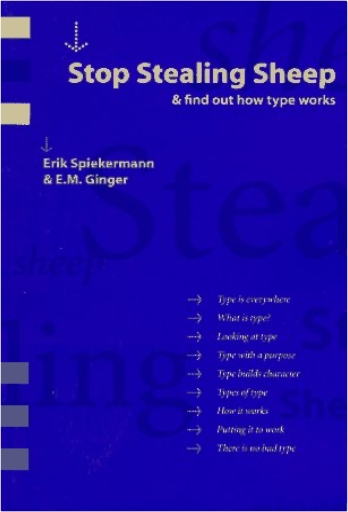 Stop Stealing Sheep & Find Out How Type WorksErik Spiekermann, E.M. Ginger Stop Stealing Sheep & Find Out How Type WorksErik Spiekermann, E.M. Ginger Frederic Goudy, American type designer, once said, "Anyone who would letterspace lower case would steal sheep." To most people, this comment only adds to the perception that type inhabits a mysterious world with intricate terminology and elaborate rules; added to this are thouasands of type faces out there that all seem to look alike. Until now, Spiekerman and Ginger shepherd their decades of typograhpic experience into a unique and lively guidebook which shows that type is easy to use, easy to understand, and in the hands of a savvy user, a powerful communications tool. You need no previous knowledge of typography to enjoy Stop Stealing Sheep. It makes no difference what kind of computer you work on, what type of software you use, or what you do for a living, because as the authors show- type, good type -reaches across all boundaries, computer platforms, and professional distinctions. 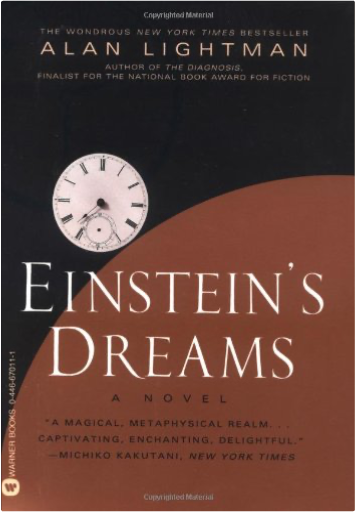 Einstein's DreamsAlan Lightman Einstein's DreamsAlan Lightman In this provocative national bestseller, first-time novelist Lightman takes us back to 1905 and into the dreams of a young patent clerk named Albert Einstein, just as he was completing his theory of relativity. "Lightman lets the reader in on the workings of a creative scientific mind".—Kirkus Reviews. 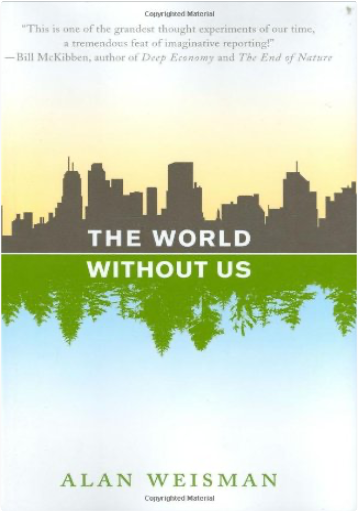 The World Without UsAlan Weisman The World Without UsAlan Weisman A penetrating, page-turning tour of a post-human Earth |
 Made with Delicious Library
Made with Delicious LibraryDenver, CO zipflap congrotus delicious library Tolva, John
